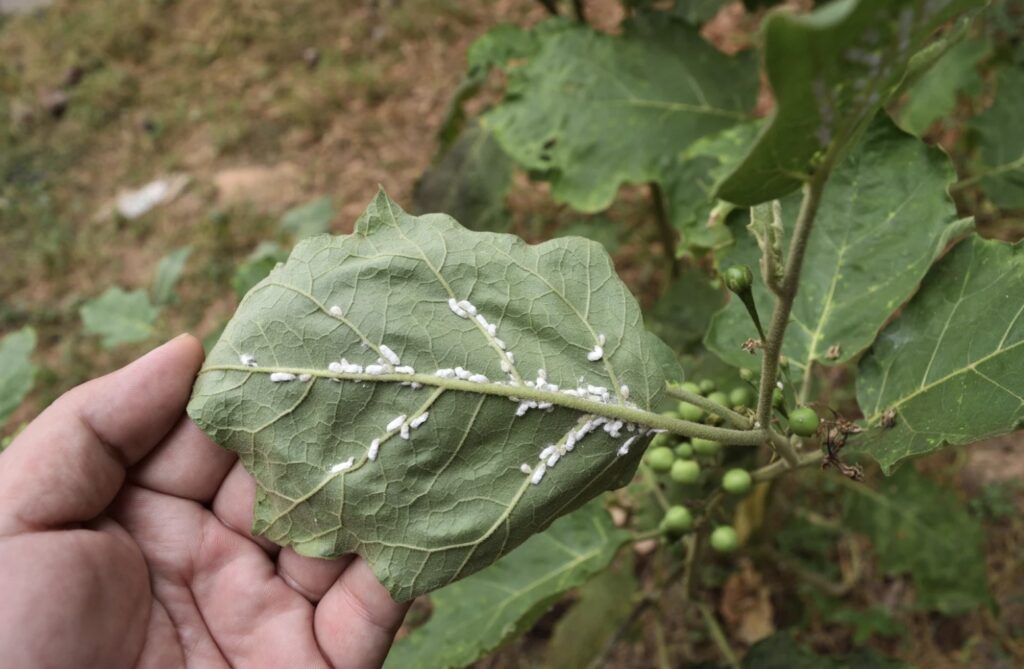
07 Apr What Are These Green Bugs in My Garden? How to Identify Aphids
What are those tiny green bugs on your plants and why do they seem to appear out of nowhere? These persistent pests, often identified as aphids, can wreak havoc on gardens and crops alike.
Aphids, small and soft-bodied insects, are notorious for feeding on plant sap, causing damage, and spreading diseases. By recognizing these critters, you can take better steps to protect your plants.
Understand Green Bugs
Understanding what these green bugs are involves recognizing different species and grasping their life cycles. These characteristics are central to knowing how they populate and affect plants.
Species Identification and Biological Traits
When you think of green bugs, you’re often considering the vast group known as aphids. These pests are typically small and pear-shaped. Their color can vary from green to yellow to almost black.
An aphid’s body is slightly longer than it is wide and features a five-segmented antenna. Some species have wings, usually extending from the middle of the back.
Not all green bugs are the same, though. For instance, the greenbug (Toxoptera graminum) is particularly destructive to grains like wheat and oats. Their bodies are a lighter green with evident darker stripes running along the back.
Life Cycle and Reproduction Patterns

Green bugs, particularly aphids, thrive in warm weather, making spring and summer the prime seasons for reproduction. During these times, aphids quickly multiply. They reproduce both sexually and asexually. In favorable conditions, females can produce offspring without mating.
This swift reproductive cycle allows populations to expand rapidly, contributing to their status as pests. Warm conditions are optimal for both survival and reproduction, allowing continuous damage to host plants throughout the growing seasons.
Effective management often requires understanding their life cycles to anticipate periods of peak activity.
The Impact of Green Bugs on Agriculture
Green bugs significantly affect various crops, causing damage that may go unnoticed until it’s severe. Understanding how these pests interact with their environment can help in managing their impact effectively.
Plant Damage and Indicators of Infestation
Green bugs, or aphids, can be highly injurious to crops, notably sorghum and wheat. They inject salivary toxins into the plant as they feed, causing visible damage such as yellowish spots and chlorotic lesions.
This damage is often initially spotted on the underside of the lower leaves, particularly in warm regions like Texas. You might notice that infested plants appear stunted.
These insects can kill young plants rapidly. Often, seedling sorghum and corn leaf are most vulnerable at their early stages. Keep an eye out for noticeable yellowing and reddening of leaves, as these are clear indicators of an infestation.
When you detect these signs, swift action is crucial to prevent severe yield reduction.
Effects on Different Crop Species
The impact of green bugs varies across different host plants, influencing their growth and yield potential. In addition to sorghum, these pests are known to target crops like corn and wheat.
Their presence is common throughout Texas and can significantly injure plants by stunting their growth.
For example, in wheat, green bugs can transmit viruses, exacerbating the damage beyond the immediate physical symptoms. You’ll often find them feeding on the foliage, causing widespread harm if unchecked.
Each plant species responds differently to infestation, which underscores the importance of tailored pest management strategies. It’s vital to monitor crop health closely to mitigate the adverse effects of these pests efficiently.
Management and Control Strategies
Managing green bugs effectively means combining natural methods with chemical solutions while ensuring your plants remain healthy. Introducing beneficial insects, using suitable treatments, and preventive care form the backbone of this strategy.
Introducing Natural Predators
To manage green bugs, one effective strategy is the introduction of natural enemies like ladybugs and lacewings.
These beneficial insects are natural predators of green bugs and can significantly reduce their populations. You can purchase these insects from garden centers or online retailers.
By fostering a welcoming environment with nectar-producing flowers, you encourage these predators to stay and thrive. Make your garden a haven for them, ensuring they have what they need to control green bugs naturally. It’s a simple, effective way to get rid of aphids and similar pests without harsh chemicals.
Chemical and Organic Treatments
Sometimes, introducing predators isn’t enough, and a more direct approach is required.
Chemical and organic treatments offer another layer of control. Applying neem oil is a reliable organic option that disrupts insect hormone systems, deterring their growth and reproduction.
Chemical treatments might be useful, but be cautious. It’s often best to have a professional handle applying them to avoid unwanted harm to other beneficial creatures or the environment. Consider your garden’s specific needs and the severity of the infestation to choose the best method.
Preventative Measures and Plant Health
Maintaining plant health is fundamental in preventing green bug infestations. Keep your plants healthy through proper watering, regular pruning, and soil management. Strong, healthy plants are less susceptible to pest problems.

Use smart landscape designs that discourage aphid habitation by disrupting their preferred living conditions. Avoid over-fertilizing, as this can attract pests. A balanced approach to care ensures your garden remains vibrant and less attractive to pests, creating a natural barrier against potential invaders.
Discover How Identifying Aphids Can Save Your Plants
Identifying aphids, those tiny green bugs, is important for keeping your plants healthy—knowing what they actually are will arm you with the right information on how to deal with them.
For expert advice and personalized assistance in managing garden pests, contact Price Right Trees at 817-290-4365 and let us help you achieve a beautiful, pest-free garden!
